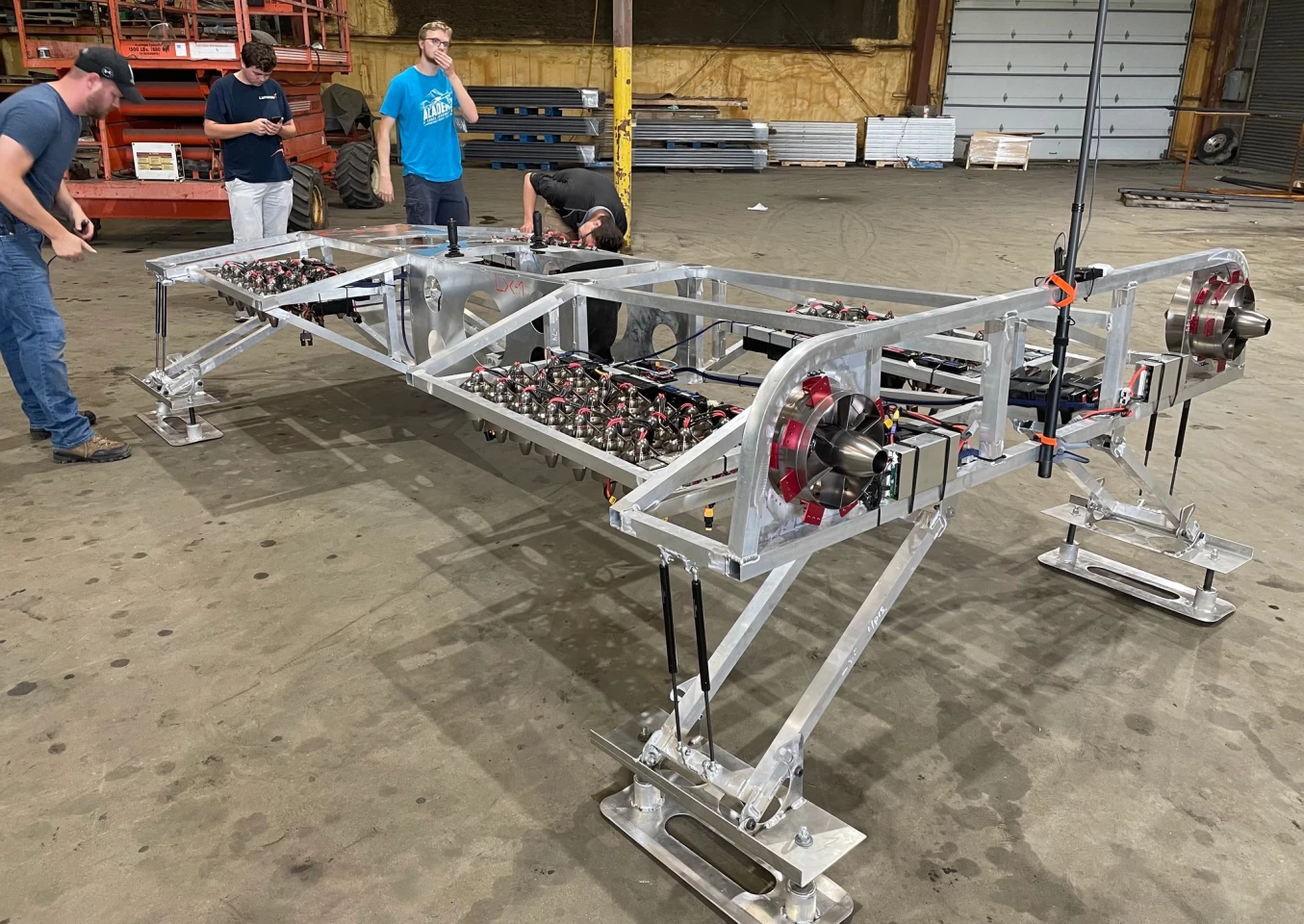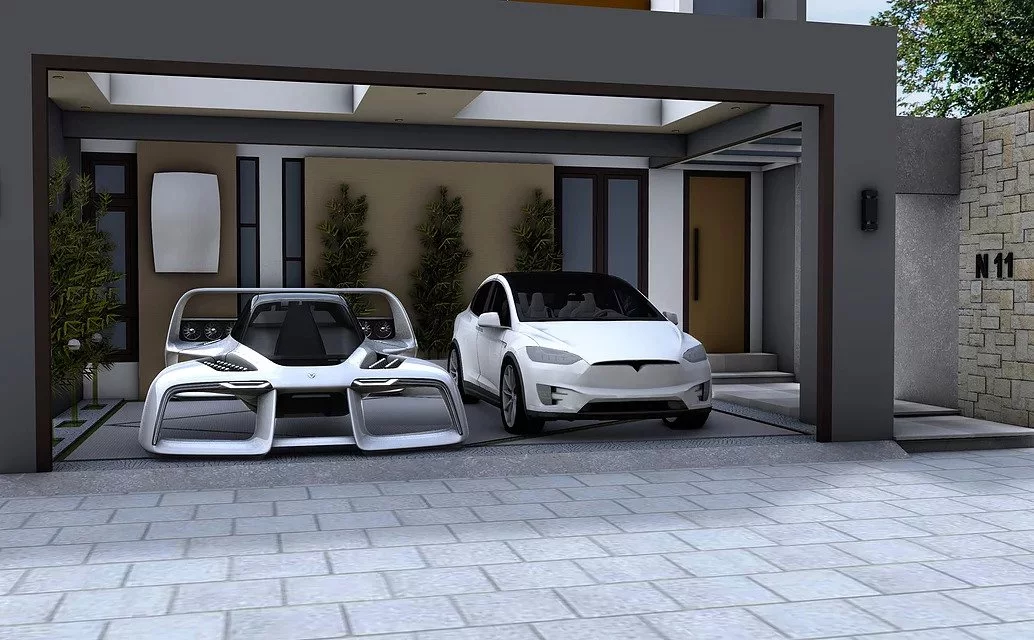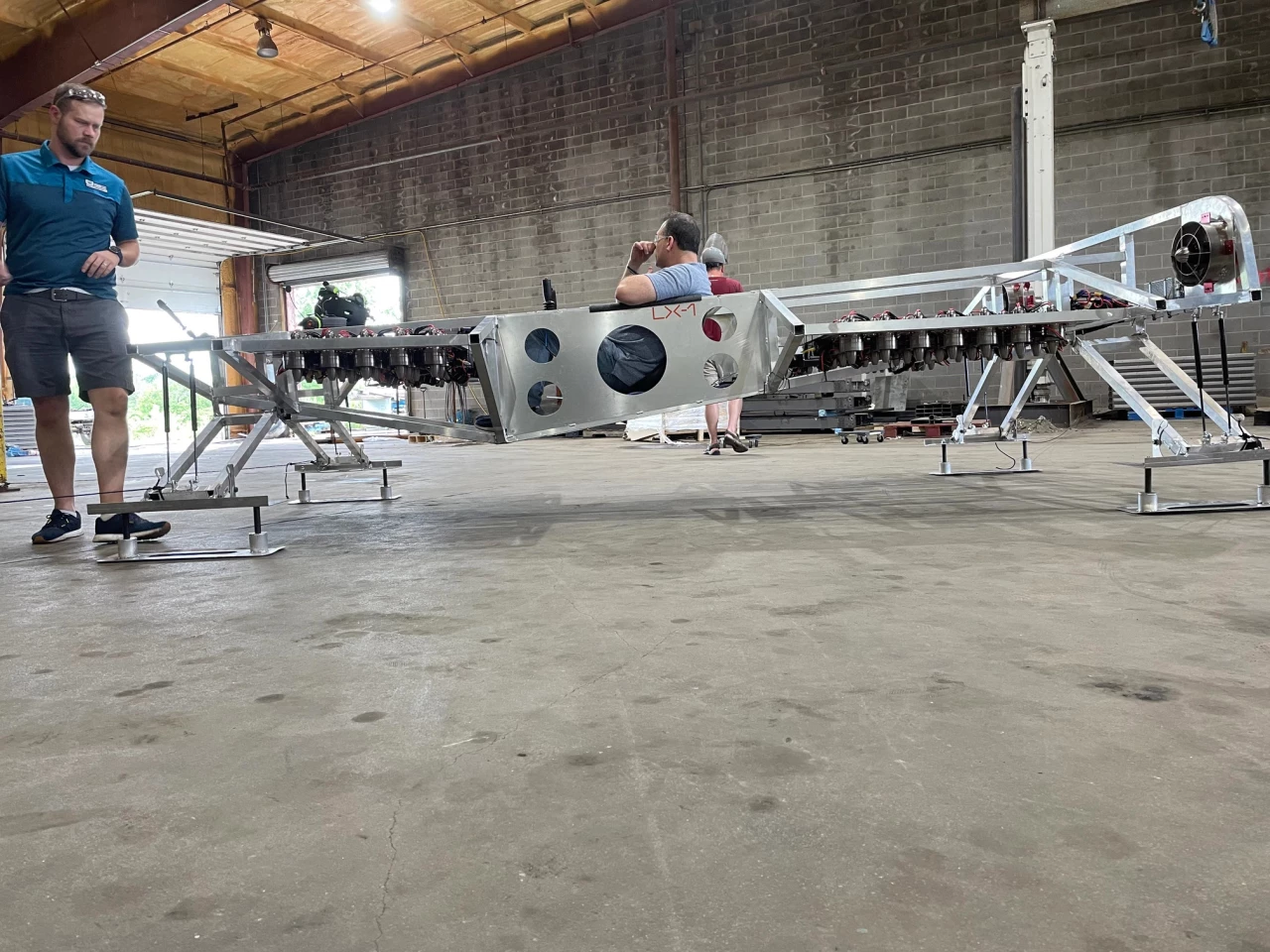LEO Flight, formerly known as Urban eVTOL, has presented a manned alpha prototype for its LEO Coupe, a flying hypercar the company says will eventually be capable of carrying three people at speeds up to 250 mph (400 km/h), complete with "dynamic" handling.
Naturally, the LX-1 experimental prototype doesn't display the rather dashing looks shown in earlier renders of the final LEO Coupe. It's a flying aluminum frame chiefly designed to test the propulsion system, which at this stage incorporates large banks of small electric jets.
Indeed, while LEO co-founder Pete Bitar told us previously that the eventual aircraft will rise vertically on just 16 large-diameter electric fans, this alpha prototype packs in no less than 72 vertical-lift fans, each about the size of a coffee thermos, in four banks. Two larger diameter fans at the rear give it some horizontal thrust.

Bitar now tells us the final aircraft will run no less than 200 small vertical jets, each 4.4 inches (11 cm) in diameter and producing 11.7 lb of thrust for a total over 2,300 lb of thrust. With an empty weight of 1,100 lb (499 kg), the Coupe will be able to carry some 510 lb (231 kg) of passengers and cargo.
LEO's decision to go with lots of tiny jets is an interesting one – smaller fans are much less energy-efficient in vertical lift and hover flight than larger ones. That's one of the reasons why Lilium is prioritizing longer trips over urban missions – it estimates its 36 smallish fans will burn twice as much energy in the VTOL stages of flight than designs with, say, six larger props.
But Lilium has the advantage of a large wing, and will thus get out of a hover and into efficient wing-borne flight fairly rapidly. LEO's design, with its wraparound double box wings, generates less lift in horizontal flight. It'll need to be travelling at around 100 knots (115 mph, 185 km/h) before it's able to support itself on efficient horizontal thrust alone. So its range is likely to suffer as a result. But more on that later!

A small box in the middle gives the LX-1 prototype a very basic cockpit, complete with what looks like a plastic chair and a pair of joysticks for control. Where the final aircraft will possibly run an interesting set of "cat's paws" as an inflatable, variable-geometry landing gear, the prototype runs four hinged legs with some thin pneumatic-looking struts that look like they'd be more comfortable stopping a flyscreen door from shutting too fast than bearing the brunt of a wonky landing.
LEO calls it a manned prototype, suggesting Bitar plans to hop in and fly it. This tracks with the timeline he laid out last year, which called for a flying frame to be airborne sometime in 2022. The company has already flown a small "ArcSpear" drone running the same electric jets, and tested the larger jets on a paragliding rig.
LEO plans to sell the Coupe as a personal eVTOL aircraft, promising a rather optimistic range around 300 miles (480 km) out of just 66 kWh of battery. Fair play to 'em if they manage that, it'd be further than the EPA range of the Chevy Bolt with the same size battery, and that thing can sit on wheels instead of lifting itself off the ground.

As we've discussed, this aircraft will run the most extreme "lots of tiny fans" design the market has ever seen, with daylight second. Its efficiency will likely suffer greatly in a hover, and it'll take longer to get up to cruise speed than most eVTOLs since its wings are relatively small, so those vertical lift fans will be running harder and longer than most. We asked Bitar for his comments on this issue, and he replied at length as follows:
"Okay so, (cracking knuckles), here we go: Yes 200 engines is a lot. It's also a lot of redundancy. AND some other benefits:
- Modular and swappable in minutes for repair and maintenance.
- Lower power per engine, allowing for A LOT smaller wires, and a remarkable weight savings there. That's not trivial
Every eVTOL maker will understand this one:
- ESCs. Electronic Speed Controllers. The higher the voltage and amperage, the bigger, heavier, and frankly, wonkier the ESC. Smaller means more reliable, proven and tested ESCs and also less risk of burnout due to high power.
- Heat. Smaller engines and ESCs produce less heat which means less waste energy.
"Our lift engines produce 11.7 lbs thrust each, with a normal requirement of about 8 lbs thrust for liftoff at full load. That's 1.7 kW each power draw, or 340 kW with all thrusters. Transition to and from forward flight is 60 seconds. Thus, we are burning about 5.5 kWh each, or 11 kWh for takeoff and landing. That leaves us 55 kWh for forward flight.
"Our forward thrust engines engines use 9 kW at 60 lbs thrust each, so 54 kW at full power. Cruise will be at about 80% power, so we should be able to run for a maximum of 75 minutes at 240-ish mph, yielding 300 miles. That's obviously with no reserve, but also with a full load the whole time. Thus, those maximum capabilities are achievable.
"Our aerodynamics have been validated by an outside firm, Continuum Dynamics, and we have fully tested our propulsion systems to empirically derive the thrust and wattage numbers.
"Our thrusters produce about 15% more thrust per watt than our competitors. Electric Jet Aircraft has been developing, optimizing and testing this kind of propulsion since 2013. LEO Flight Corporation is a direct beneficiary of this research, even though it is a new company. This allows us to potentially leapfrog competitors in the eVTOL space.
"Also, the benefits of electric jet turbines over propellers are numerous. Our small jets allow us to actually build and operate an automotive-sized vehicle with sufficient thrust and speed to be practical. Endurance is lower with jets, but speed is much higher. So for distance, jets win. If you're doing a lot of VTOL hopping, props are better.
"Another issue is infrastructure. If you have big propellers spinning around, you have to have much bigger real estate to house landing zones. The LEO Coupe can basically land in a parking space. This distributes landing areas and increases safety dramatically.
"I'm happy to answer any other questions you may have. We look forward to starting flight testing later this summer on the LX-1 and showing folks what we mean, empirically."
The company will potentially sell this machine as a kit, dodging as much certification red tape as possible to begin with. Bitar was originally targeting a price under US$290,000, but now tells us that COVID-related supply chain issues have nearly doubled his component costs, raising the retail price of a Leo Coupe to US$459,900.
We look forward to seeing it in the air! Check out a render video below.
Source: LEO Flight
Editor's note: This story was updated on June 28 with further clarifications from LEO co-founder Pete Bitar, including a revised price and some new information on the aircraft's propulsion system with 200 small electric jets.










